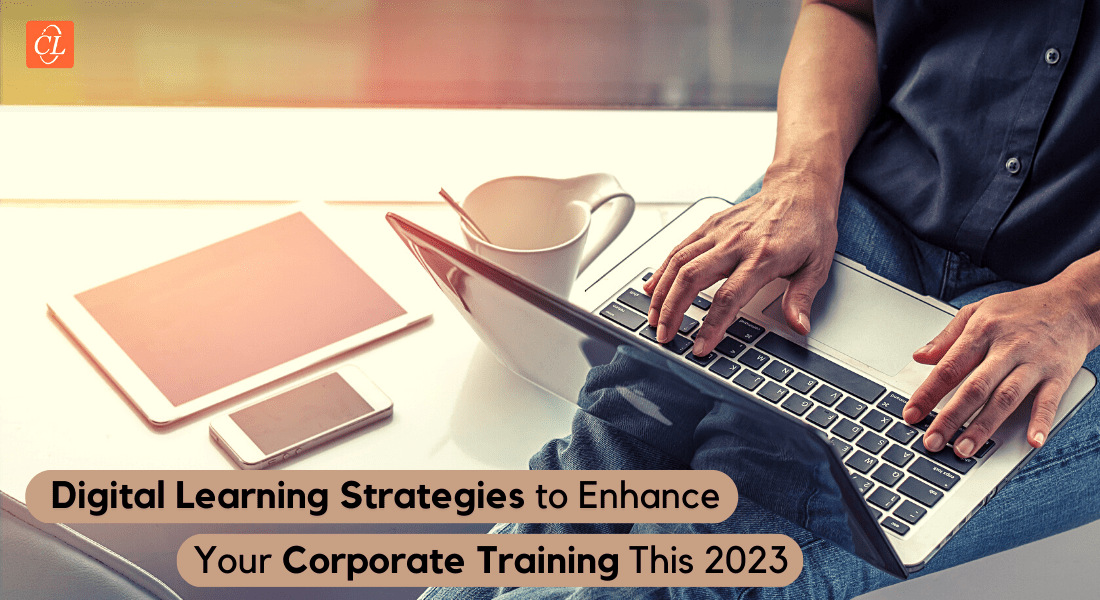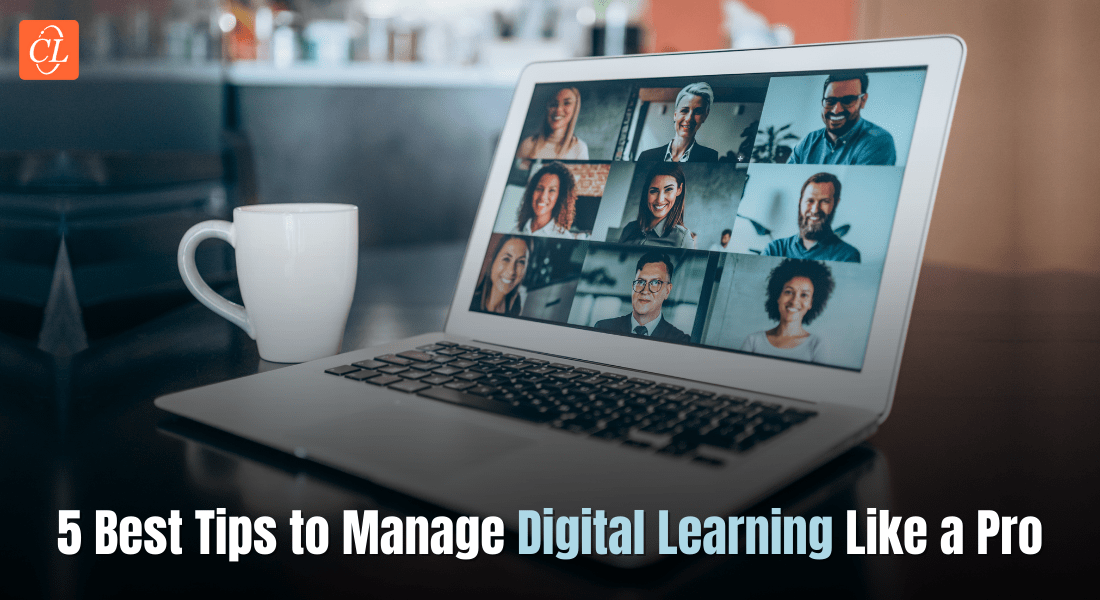Top 5 Digital Learning Strategies to Enhance your Corporate Training in 2023

Technological advancements have been at an all-time high, and organizations have started to digitalize their training sessions wherever they can. Digital learning is on the rise because of its unexplored potential, and the way it eases human effort makes it more crucial to implement digital learning for corporate training. Another factor is that organizations have their workforce spread globally so physical training formats are not viable for them, and in such cases, digital learning is a must. Read on to discover the top 5 digital learning strategies along with their best use cases for 2023.
Planning to Incorporate Digital Learning in 2023?
Explore the top 5 strategies to get the best results –
- Microlearning & Mobile Learning
- Scenario-based learning & Simulations
- Gamification & Game-based Learning
- Virtual Instructor-Led Training
- Blended Learning
Top 5 Digital Learning Strategies to Enhance your Corporate Training in 2023
1. Microlearning & Mobile Learning
Microlearning is one of the most preferred formats to facilitate digital learning within organizations because modern learners have a very short attention span. Various microlearning assets like videos, infographics, and podcasts can be most productive for them because they can be accessed in mere seconds, or at most a few minutes, and learners can gain considerable information in such a short period of time. These microlearning assets can be helpful for just-in-time training and performance support for the employees and help them with knowledge retention.
Smartphones are the most preferred devices for modern learners and mobile learning is one of the most popular strategies to access training modules, especially for sales executives and customer service/support professionals because they are not physically present at the workplace and require remote and offline accessibility.
Explore how you can leverage the advantages of mobile learning for your corporate training.
2. Scenario-based Learning & Simulations
Modern learners prefer experimental learning and to facilitate that, formats such as scenario-based learning and simulations can be impactful. Scenarios can help your employees to experience real work-life situations virtually and enhance their knowledge about how things work, how are they supposed to react in different situations, and what aspects they need to be cautious of. These scenarios can nurture the critical thinking, decision-making, and problem-solving abilities of the learners, and make them more productive at work.
Similarly, simulations also provide effective practical expertise for various tasks at work where the employees are provided with a sandbox risk-free environment. They can practice the various processes virtually where they can make as many mistakes as they want and learn from them.
For training sessions such as product training, IT training, and sales training, you can incorporate these strategies to engage your employees and enhance their expertise apart from knowing their plus and minus points. A lot of organizations such as manufacturing industries, health industries, safety departments, and IT industries use scenario-based learning and simulations to create an immersive learning experience for their employees.
3. Gamification & Game-based Learning
Games are something that can maximize engagement because they are highly interactive and competitive. Most of the modern-age employees are millennials and Gen Zs, and they have spent most of their childhood playing either video games or physical board games so they are well aware of the benefits of various game elements. The game elements that can effectively be incorporated into your digital learning courses are awards, milestones/levels, points, leaderboards, and missions/objectives. These elements when infused with eLearning courses and assessments, can do wonders in terms of the engagement and productivity of your employees, and this process is called gamification.
Game-based learning is a more direct and full-fledged approach to learning through games. It’s better to explain this with an example, trainers at aviation institutes use a game called flight simulator as one of the ways to facilitate self-learning for the learners. A departmental store can use games where employees have to manage a store virtually and understand the various tasks that follow like responding to customers’ queries, arranging the displaced items to the slot they belong, using the billing machine, etc.
4. Virtual Instructor-Led Training
While all the other digital learning strategies we discussed till now are asynchronous i.e the learners can access them flexibly without the presence of an instructor, VILT is synchronous as the instructor and the learner are involved in a real-time environment. Learners have the flexibility to attend the sessions from wherever they want on any of their preferred devices. They can collaborate with other learners in a single platform, initiate discussions, and clear their doubts with the instructor. Modalities such as polls, chats, whiteboards, and breakout rooms can enhance employee engagement and make the sessions interactive.
5. Guided Learning
Remember, as a child when you couldn’t understand something and your teachers would guide you through, that’s exactly the concept behind guided learning. Learners are provided with a set of instructions throughout the course that helps them understand the concepts better and complete the course. Learning guides in the form of digital avatars/characters are created and personified where they use hand signs, voice narrations, and even expressions to set create an immersive learning environment. The characters or avatars are customized to match the gender, age, and work roles of the learners which helps them connect to the learning content better.
A Bonus Tip
When in doubt, use everything at your disposal, sounds funny right? Well, not really everything, but you can use multiple strategies at once as it works like a charm when implemented and executed correctly. That’s what blended learning does, you can mix and match various strategies and techniques to create a complete training program where all types of learners will have something relevant for them. Even though blended learning is defined to be one of the strategies that can offer you the best of both worlds (online and offline), you can use the digital learning strategies specified above and create the online assets for your blended learning program.
For example, 25% of learners prefer text-based learning, 45% of learners prefer videos followed by interactive assessments, and the rest prefer synchronous training through VILT sessions. A blended approach can effectively consider all these learning preferences and a productive blended learning program can be developed. A successful blended learning program for these learners can consist of an eBook as an external resource, video courses to explain the various topics followed by gamified assessments, and in different intervals, VILT sessions can be held to clear any sort of doubts and explain the topics that are proved to be most challenging.
Parting Thoughts!
Digital learning strategies have a bright future ahead because of the increasing automation in the way things work in the corporate world. Artificial intelligence, virtual and augmented reality, and metaverse are some of the advanced technologies that can digitalize corporate training in various innovative and futuristic ways that are still not explored completely. To understand more about what strategies and technologies are most likely to be trending in 2023, you can access our free eBook and gain valuable insights to have a successful year ahead.




![How Multiple Industries Can Utilize Digital Learning for Technical Training [Video]](https://blog.commlabindia.com/hubfs/digital-learning-multiple-industries-video.jpg)
